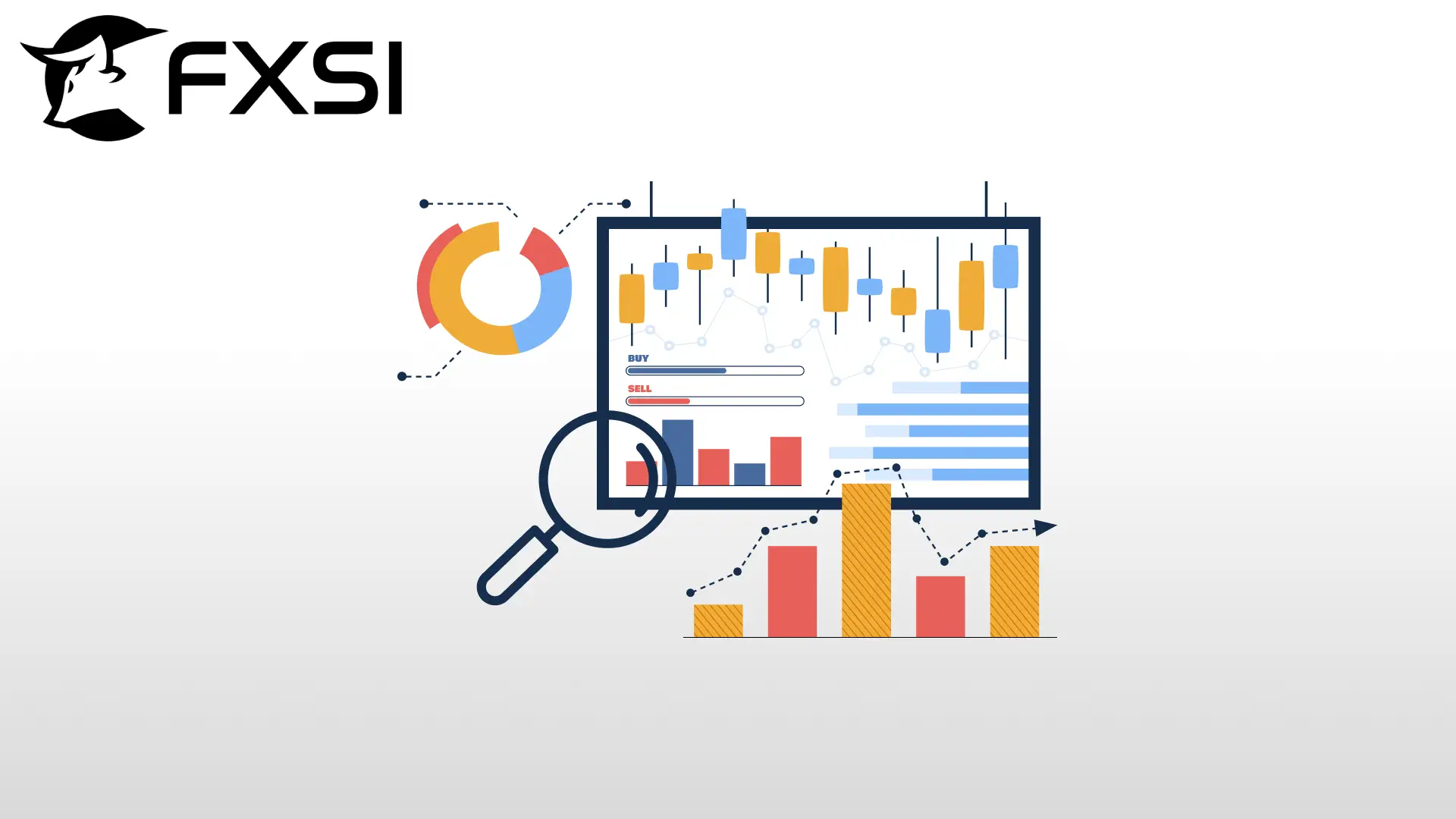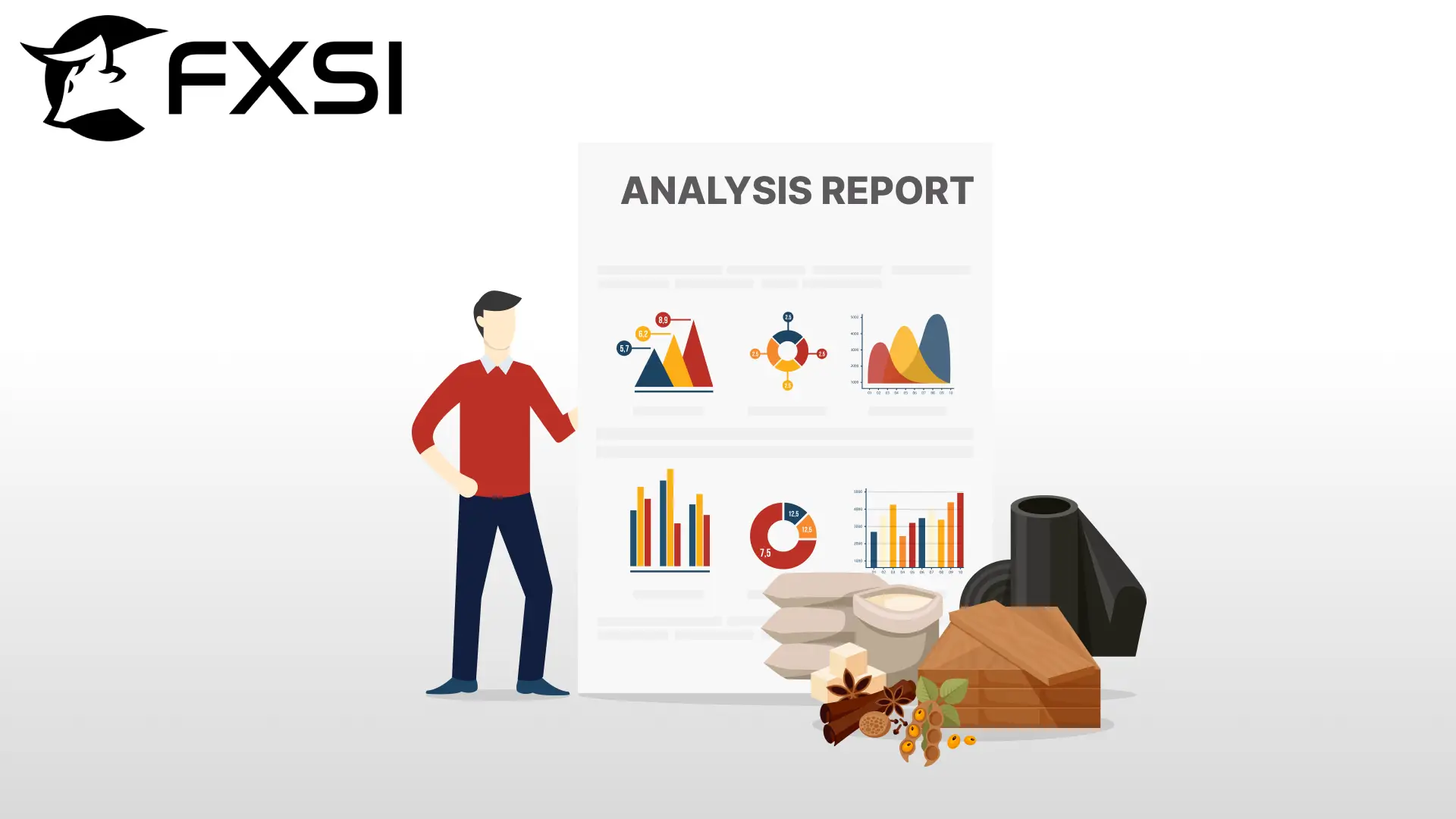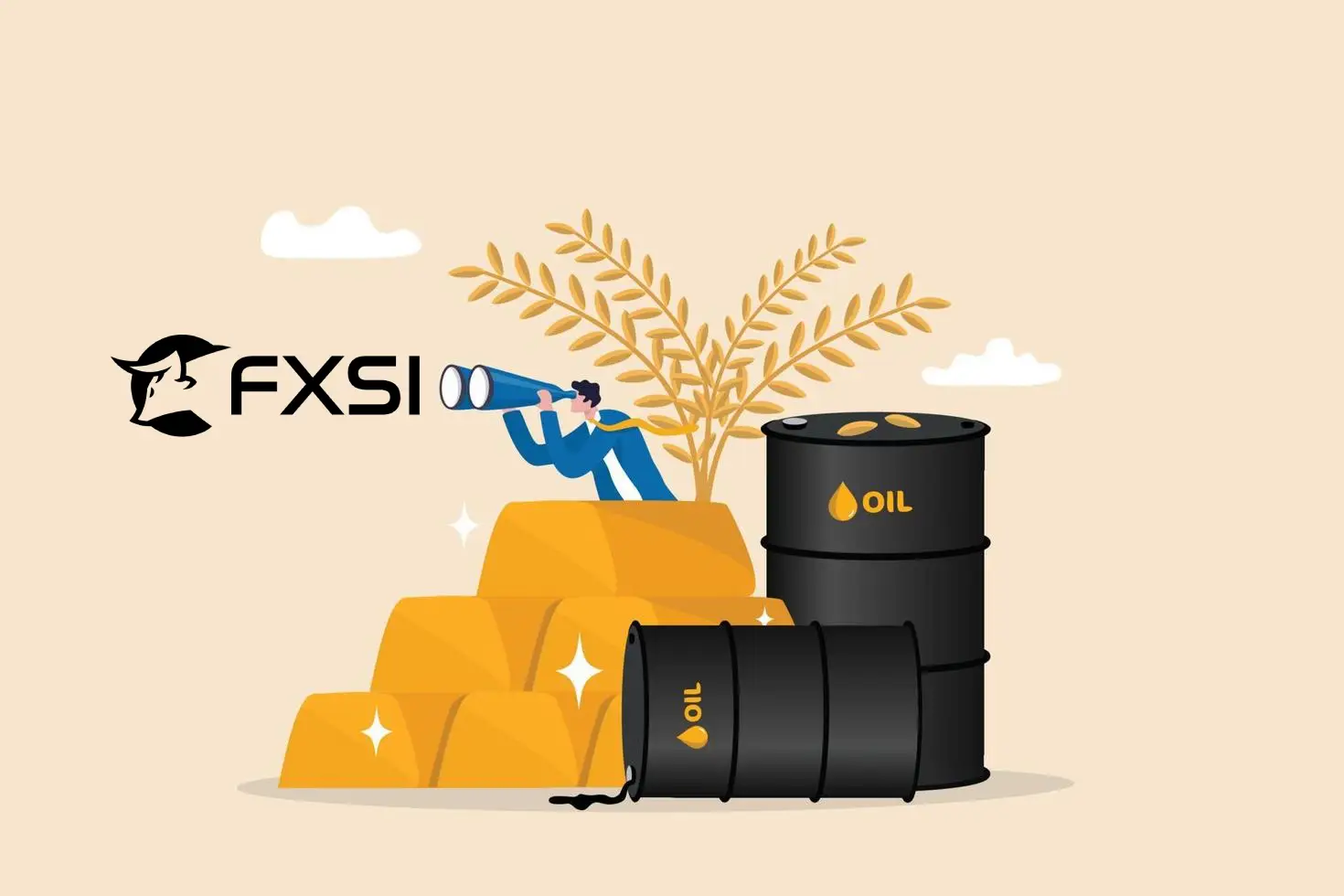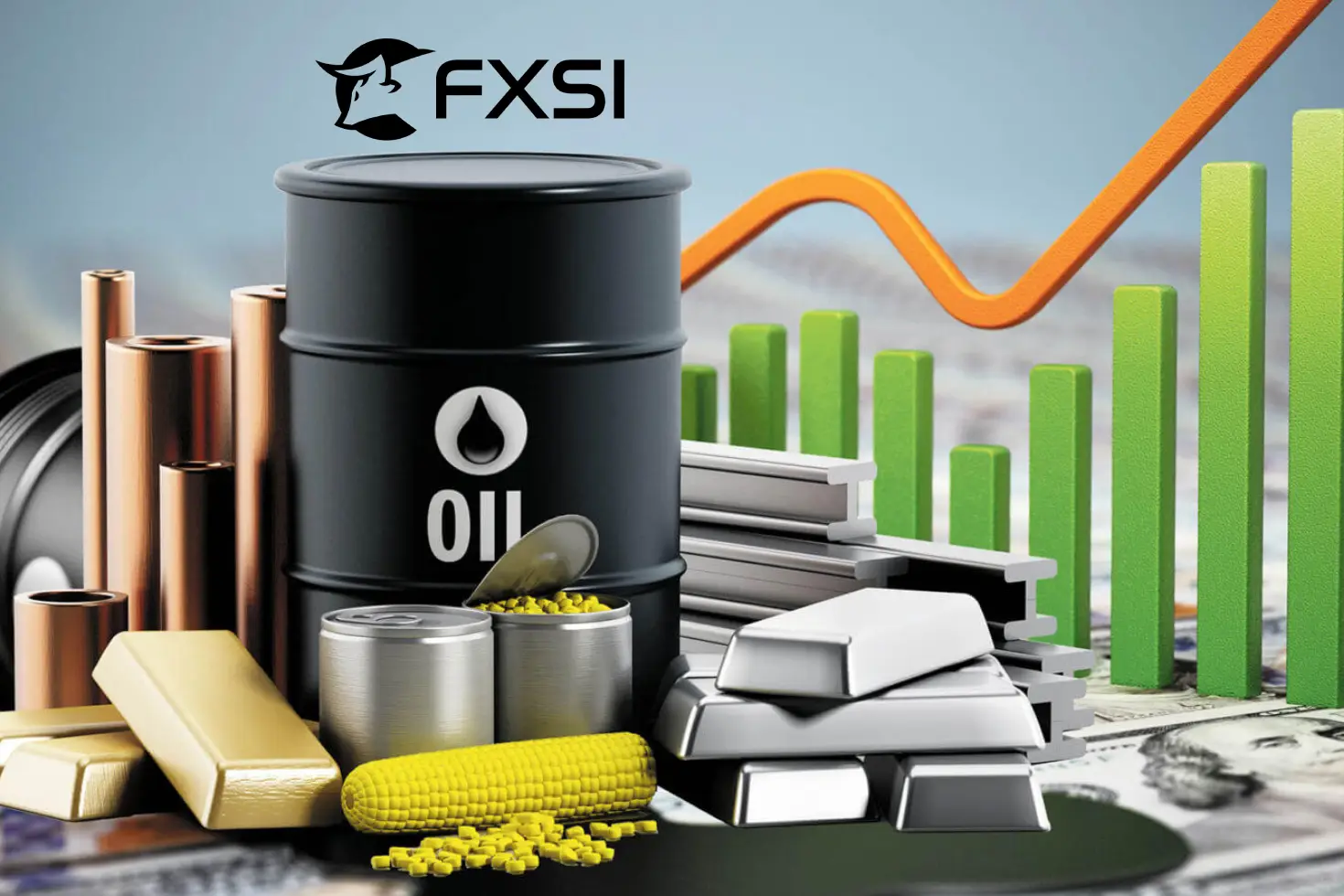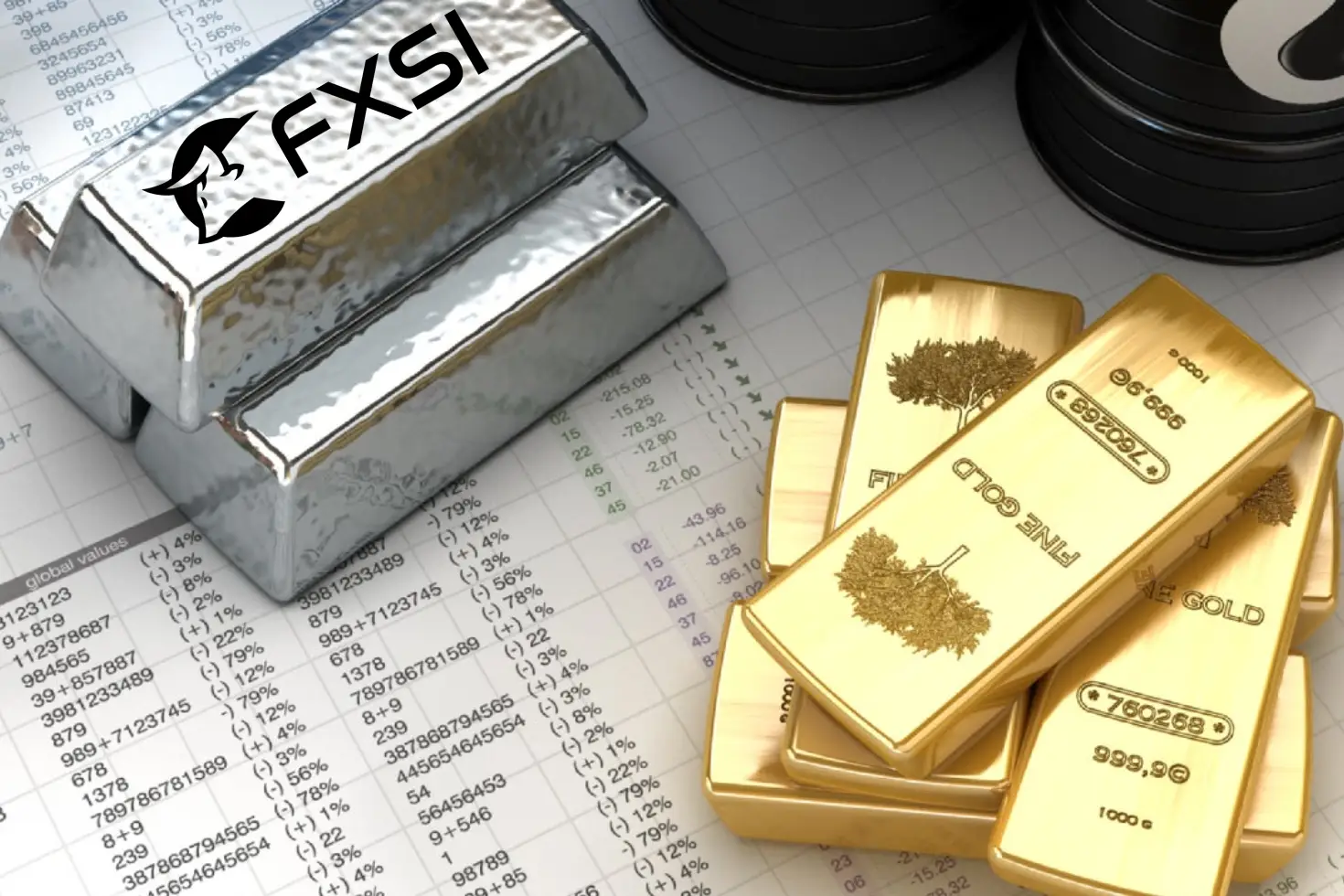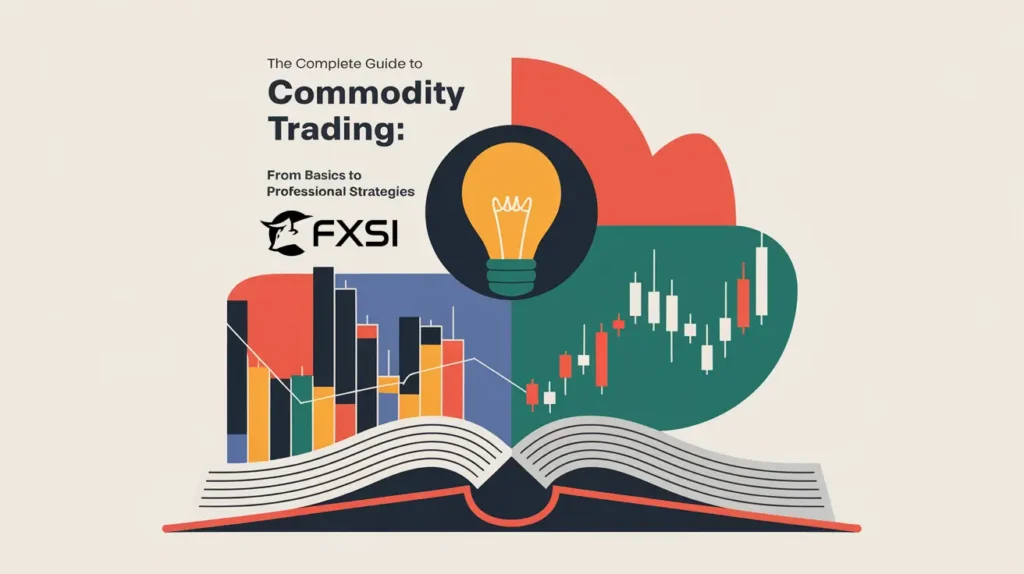Table of Contents
In this guide to commodity trading we will unveil the basics and how commodity trading works?
This extensive, comprehensive guide is designed for both beginners and advanced traders. Knowing the types of commodities and the impact they could have on your everyday life is an essential aspect of becoming a commodity trader.
This guide will run you through the details of starting up as a commodity investor and teach you everything you should know about this trading practice.
So, let’s get started!
Guide to Commodity Trading – How It Works?
The process of trading commodities entails purchasing and selling a crude material, like agricultural goods, that oil, gold, and industrial metals encompass. Its objective is to aid businesses minimize risks, allow markets to control resource prices, and enable investors to control portfolios. It deals with deeply profound issues and is extremely relevant globally.
There are two categories of commodities which are separated based on their value:
- Soft Commodities: Goods that are agricultural like wheat, livestock, coffee, sugar, and cotton.
- Hard Commodities: These are caves, like copper, gold, silver, natural gas, and crude oil.
Commodities trading can be performed in markets through both: spot and derivative trading. Spot trading pertains to the selling and buying of commodities for instant delivery of the item. Derivative includes future and option trading, and ETFs.
Why is Commodity Trading Important?
Like any business, trading has a lot of impacts on the economy and the financial market on a global scale.
1. Risk Management Along With Stability In Prices
Prices of commodities can fluctuate quite drastically as a result of global affairs, climatic changes, or interruptions in the supply chain. Farmers and oil-producing companies as hedgers anticipate the high level of business security that can be acquired from the nature of volatility in commodities which is offered by the futures market.
2. Portfolio Diversification And Investment
As new opportunities such as bonds and stocks are emerging, investors have a safe backup plan to fall back on during times of escalation in inflation or economic collapse. As a rule of thumb, investing in bonds and stocks is the most difficult due to the autonomous behavior of commodity prices which mitigates the risks for investors.
3. Impact Of Economic Activity On The World
Types of commodities, their supply and demand are what determine the value of the currency, interest rates, and trading activities. Fluctuations in the price of crude oil can modify the fuel rates and the means of transportation and at the same time have an impact on the global energy markets.
Fundamentals Of The Commodity Market
A commodity market is a complex system with a wide variety of participants, instruments of marketing, and governing bodies.
1. Leading Commodity Exchanges
Let’s have a look at the leading commodity exchanges:
- Chicago Mercantile Exchange (CME)
- Intercontinental Exchange (ICE)
- London Metal Exchange (LME)
- The New York Mercantile Exchange (NYMEX)
2. Types of Market Participants
- Hedgers – Companies and producers using commodities to manage price risks (e.g., airlines hedging fuel costs).
- Speculators: Investors or traders that seek profit from the perpetual changes in price.
- Arbitrageurs: Traders that take advantage of price differences between two or more markets with little economic risk.
- Governments & Central Banks: Take measures to intervene in the economy by managing prices of commodities for monetary and stabilizing control.
3. Trading Instruments
Participation in the market is unrestricted for commodity traders through a number of various instruments provided:
- Futures Contracts: Standardized purchasing and selling of commodities set for a specific time in the future.
- Options: Gives rights, but not the obligation, to buy or sell a commodity at a set price at a later date.
- Exchange Traded Funds (ETFs): Allow investors to gain value from the increases and decreases in the values of particular commodities without holding direct ownership.
- Spot Markets: Immediate buying or selling of tangible commodities followed by instant payment and transfer.
The Commodity Trading Instruments:
Through various methods, traders and investors can procure raw materials without needing to physically obtain the asset. To start trading or investing in commodities, every trader must possess a strong knowledge of the markets and have defined goals.
1. Futures Contracts
A futures contract is an agreement between two parties to buy or sell a specific commodity at a predetermined price on a specified date in the future. These contracts can be traded in regulated exchanges like the Chicago Mercantile Exchange (CME) and Intercontinental Exchange (ICE).
How Futures Work:
- All futures contracts clarify the amount, quality, and location of delivery of the commodity to be traded.
- When one trades on futures, it is necessary to make a cash deposit with a broker, which is known as a margin.
- They are widely known for offering protection against unwanted price fluctuations as well as for speculation.
Example of a Futures Trade:
In this case, producers of coffee can sell today at a favorable price, betting that the price will drop in 6 months. On the other hand, a speculator looking to profit from the price drop in such a shift to the parallel may wish to buy a contract with the intent of selling later at a higher price.
Pros & Cons of Futures Trading:





If you would like to explore various approaches to be taken with some futures trading, kindly check our comprehensive report on how to trade commodity futures for more information.
2. Commodities Options
A commodity option refers to a type of derivative that gives one party the right but not an obligation to buy (or sell) a futures contract on a specific date. They are classified into:
Call Options – These are the right to buy or purchase the commodities in question, whose prices have been predetermined in the options contract. These are used when one expects the price to go up.
Put Options – These are the rights relating to the selling of the commodity, which can be exercised within the contract time. These are used when expecting the price to go down.
Why Trade Commodity Options?
- They are not constrained like in futures contracts and this adds to their flexibility.
The risk is well defined; the maximum loss is the amount the option buyer paid for the premium on the option contract.
- Ideal for commodities traders who cannot afford large or excessive losses while hoping for good profits.
Types of Trades Done With Options:
If a trader believes that a stock will increase in value, they can buy a call option on the stock without taking up a futures contract. For example, in the case of gold, a trader can just buy a gold call option instead of actually purchasing a futures contract.
Pros & Cons of Options Trading:




3. Exchange-traded funds (ETFs)
Commodity exchange-traded fund enables investors to speculate on or invest in commodity prices without having to enter into a futures or options contract. Such funds, which comprise investments in specific commodities or a cluster of related commodities, are traded on major exchanges just like shares.
Types of Commodity ETFs:
Physically Backed ETFs – Derives their value from holding the actual commodity such as SPDR Gold Shares ETF which holds gold.
Futures-Based ETFs – Instead of buying the commodity itself, they buy commodities futures contracts.
Equity-Based Commodity ETFs – Provides exposure to the commodity indirectly through stock in commodity producers, like oil and mining companies.
Why Choose Commodity ETFs?
- ETFs, particularly commodity ETFs, are most favored by passive investors looking to trade in commodities without spending a lot of time watching the markets.
- Not as volatile as trading commodities directly.
- Best for people who want to employ a step investment strategy.
ETF Trading Example:
An example is an investor who may want some exposure to crude oil but does not want to buy futures. This investor may use the US Oil Fund, which takes money in order to track oil price movements using futures contracts.
Pros & Cons of Commodity ETFs





Commodity Trading Analysis and Strategy
For effective commodity trading to take place, it is fundamental to have a coherent strategy that stems from analysis and calculated risk management. For traders and investors to make the most profits, while limiting losses, they try to use many techniques, these include technical and fundamental analysis as well as risk management.
Note: Before learning about analysis, check our comprehensive guide on understanding commodity trading hours and market sessions.
1. Technical Analysis
Technical analysis is concerned with the study of data regarding the movement of prices and volume on trades to anticipate what will occur in the market. Those who practice this form of analysis believe that historical price movements influence future price shifts due to market sentiment.
Essential Tools of Technical Analysis
Graphs and Price Movements: This can help predict and forecast the market movement.
Candlestick Charts: Reflects trading activities such as opening, closing, and high or low prices.
Support and Resistance Levels: Surge in prices during trading days, where the commodities reverse or breakout levels.
Trendlines and Channels: Identify peaks and downturns within the market.
Indicators and Oscillators:
Moving Averages (MA): Averages the price in wave movements to capture the broader perspective of market condition.
Relative Strength Index (RSI): Measures the moment when certain trade volumes have been reached.
MACD Moving Average Convergence Divergence: It illustrates the strength and direction of the trend.
 The Advantages of Technical Analysis
The Advantages of Technical Analysis
- Allows traders to determine entry and exit points.
- Indicates clear opportunities for mid and long-term trades.
- Offers an option for automation through the use of trading algorithms.
 The Disadvantages of Technical Analysis
The Disadvantages of Technical Analysis
- During periods of high volatility in the market, false signals can be generated.
- Real-life influencers do not have aspects such as demand and supply are ignored.
2. Fundamental Analysis
Fundamental analysis targets economic, political, and industry-specific issues that affect any commodity price. It is beneficial for long-term investors and traders, allowing them to spot trends without being misled by short-term price changes.
Fundamental Factors:
Amount of Production: Agricultural harvests, minerals, and oil reserves have an effect on supply.
Climate Changes: Effects of glacial melting and droughts along with Natural calamities have some effects on agricultural commodities.
Geopolitical Events: Different types of wars, trade sanctions, and trade tariffs impose risks on commodity supply chains.
Demand Factors:
Economic Growth: Developed countries exhibit higher demand for commodities such as oil, economic metals, and foodstuffs.
Industrial Consumption: Demand for energy and metal increases due to construction and manufacturing activities.
Seasonality: Some commodities are affected by seasonal fluctuations of certain activities (natural gas in winter).
Example of Fundamental Strategy:
In the event of a major war, traders may start their long positions in crude oil assuming a stoppage in major oil-producing countries. Alternatively, traders may buy agricultural commodities with the assumption that a severe drought would occur and shift production capacity resulting in rising demand and price.
 Pros of Fundamental Analysis
Pros of Fundamental Analysis
- Gives insight into investor’s expectations of prices and the market symmetry.
- Covers non-price factors that could drastically affect commodity pricing.
- Best for concerns regarding options strategies and other investing strategies.
 Cons of Fundamental Analysis
Cons of Fundamental Analysis
- Takes a lot of time to gather an extensive amount of information and requires a rough and continuous analysis.
- Unideal for the market to act on event parameters because something that defies prediction most certainly will happen.
3. Risk Management
One of the riskiest aspects is promoting successful commodity trading- this single phrase captures the importance of risk management. Without adequate risk management processes in place, traders can incur immense losses in these highly unpredictable markets.
Key Risk Management Techniques:
- Position Sizing
- A singular trade should not exceed 1-2% of one’s capital.
- Adjust position size according to how volatile the market is.
Stop-Loss and Take-Profit Orders:
Stop-Loss Orders: Close a position when losses reach a predefined value, minimizing major losses.
Take-Profit Orders: Close a position at a certain value, thus realizing profits.
Diversification:
Allocate appropriate amounts of money across all the commodities in metals, energy, and agriculture markets reducing exposure risk on a single investment.
Tip: Avoid concentrating all funds in a single market.
Hedging Strategies:
- A hedge against changeable pricing can be done through future contracts.
- Traders can protect themselves from a certain degree of risk by using options.
Managing Leverage:
- Do not take too much leverage as it can lead to more losses than profits.
- Take Leverage appropriately while keeping margin requirements in mind before making trades.
Risk Management in Action
A trader purchases a gold futures contract at $2,000 per ounce and places a stop-loss order at $1,950. Additionally, they have a take-profit order at $2,100. The stop-loss order is designed to limit losses while the take-profit order ensures gains are captured as needed.
 Advantages of Risk Management
Advantages of Risk Management
- Enables appropriate allocation of resources to achieve long-term trading goals.
- Reduced impulsive trades.
- Lowers the risk of being blindsided by changes in the market.
 Disadvantages of Risk Management
Disadvantages of Risk Management
- In times of excessive volatility, stop-loss orders can trigger unnecessarily.
- Severe over-diversification can inhibit capturing profits.
Market-Specific Considerations
Amid the myriad markets of commodity trading, each market has its particular dynamics, motivating factors, and varying acute-risk parameters. For traders intending to either focus their trading strategy or diversify their portfolios, it is mandated to have a grasp of the different classes of commodities.
This section will thus elaborate on the core markets in commodities such as energy and metals, agriculture, and soft commodities, including notable market movers and how each market is traded.
1. Energy Commodities
One of the most liquid and economically developed markets in commodity trading is the energy market. It covers crude oil, natural gas, coal, synthetic natural gas, as well as refined products like gasoline and diesel.
Key Energy Commodities:
- Crude Oil (Brent & WTI) – The most traded energy commodity, serving as a global benchmark.
- Natural Gas – A crucial energy source for electricity generation, heating, and industrial use.
- Gasoline and Diesel – Refined oil products essential for transportation.
- Coal – Still a significant energy source in many parts of the world.
Price Drivers for Energy Commodities
- OPEC+ supply quotas greatly impact the oil supply to the global market.
- Economic growth increases energy demand, while recessions reduce consumption.
Geopolitical Events
- Middle East conflicts reduce oil and natural gas supplies from these countries to other parts of the world.
- Sanctions against oil exporting countries like Russia and Iran restrict the oil flows in the market.
- Heating oil and natural gas consumption rises during winter.
- Gasoline usage during summer increases due to an upsurge in traveling.
Technological and Political Factors:
The growth of the renewable energy sector reduces the consumption of fossil fuels. However, policies on emissions and the energy transition determine the level of consumption and usage best.
Market Activity Strategies & Tactics:
Futures Contracts – The trader community of energy uses futures of crude oil and natural gas to make speculative or hedging trades.
Options Trading – Enables limited risk exposure while providing a variety of strategies.
Spread Trading – Profiting from differences in prices of contracts with differing expiry dates.
2. Metals Market
The market for metals can be classified into two mainstream categories, which are precious metals, gold, and silver, and industrial metals like copper, aluminum, and iron ore.
Important Traded Metals:
- Gold – A safe store of value that is used to make investments, jewelry, and by central banks.
- Silver – Commonly used both for industrial purposes and as a means of investment.
- Copper – A significant mined metallic commodity that is used widely in electrical investments, construction, and as a thermally conductive element in machinery.
- Aluminum, Nickel, Zinc – A variety of metals crucial in the manufacturing and building industries and in modern-day technology.
Metal Price Drivers:
- Economies with industrial growth usually have a high demand for metals like aluminum and copper.
- Slowdowns lead to decreased demand as the manufacturing processes are not as active.
- During periods of economic instability or inflation, gold is likely to appreciate.
- Higher interest rates tend to lower the demand for assets that bear no interest such as gold.
- Mining strikes and geopolitical risks affect the supply.
- China’s production policies have a high degree of correlation with the metals market.
Trading Strategies in the Metals Market:
Long-term Investing – Many traders keep gold and silver as a preventive measure against inflation.
Demand for Industrial Products – Traders analyze the processes of production and construction to determine the need for industrial metals.
Spread Trading – Traders profit from the difference in prices for various metals.
3. Agricultural Commodities
Agricultural commodities range from grains, oilseeds, and livestock to dairy products. Such markets are very responsive to government policies, global demand, and most importantly, weather conditions.
Key Agricultural Commodities
- Corn, wheat, and soybeans are critical for feeding both people and animals.
- Sugar and Cotton are used as food and in the textile industry.
- Coffee and cocoa are some of the most consumed soft commodities. Live cattle and lean pigs are straight cattle and pork trades.
Price Factors for Agricultural Commodities:
- Crops can be greatly affected by droughts, floods, and hurricanes.
- Production around the globe is affected by the El Nino and La Nina cycles.
- Increase in the world population and food consumption.
- Additional people will translate to higher consumption of poultry, grains, and soft commodities.
- Price-controlling Subsidies, tariffs, and export bans influence traders’ policies.
- Farmers and producers mitigating risks – Utilizing strategies of future orders to hedge risk.
4. Soft Commodities
Soft commodities, such as textile fabrics, are concerned with the food and drink industries. Unlike grains, they are typically grown in specific climate zones.
Key Soft Commodities:
Coffee – after crude oil, the second most lucrative commodity traded.
Cocoa – vital for the production of chocolate.
Sugar – Brazil and India dominate the production of this crop.
Cotton – Major raw material for the textile industry
Price Drivers for Soft Commodities:
- Climate and weather conditions
- Consumer demand and economic growth
- Supply Chain and logistics issues
Marketing For Soft Commodities Trading:
Change In Trend – For example, seasonal holidays increase chocolate consumption, indicating increased demand for cocoa butter.
Forecast Market Transactions – Commodities are more sensitive due to economic events and soft currency fluctuations.
Fresh Producing Methods And Technologies – Offers agility to swiftly changing market conditions.
Futures And Options Contracts – They are employed mainly to secure a compound margin in extreme price fluctuations.
Next Steps
You’re done learning the core and the strategies of commodity trading. Now, you can move on and become an effective trader!
1. Increase your Trading Knowledge
While a lot has been talked about in this article, you can always learn more. Try to research specific trading instruments like futures, options and ETFs. You can also look into specific trends for energy, precious metals, or even agricultural commodities, as they can further deepen your knowledge.
2. Make a Sound Trading Plan
It is of the utmost importance to have a clear and well thought out strategy when doing commodity trading. Any trader needs to have risk management at the center of their approach, regardless of whether you prefer fundamental or technical analysis. There is always room for improvement, and different methods to aid with trade and risk management will help.
3. Using a Good Trading Platform
Research other brokers that give access to commodity markets and compare their fees, features, and reliability. There’s a chance you may find a certain platform that fits your trading style better.
4. Use A Demo Account For Rehearsal
Taking the first step to actual trading can be tricky, so start off with a demo account where you can try your strategies out without the risk of losing money initially. Doing so allows you to effectively build your confidence towards real trading while also gaining great experience.
5. Always Follow the Current Trends in the Market.
Like any other market, commodity markets are constantly changing. Following news, economic reports, and trends in supply and demand can make trading decisions easier.
Commodities trading can be gained by following these steps and improving your knowledge and skills constantly.
